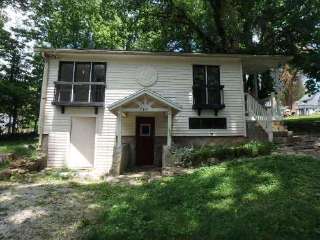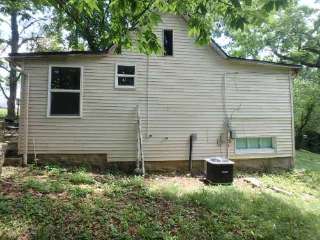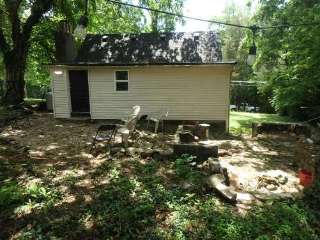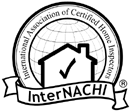
(502) 298-4758
3711 Trail Ridge Rd
Louisville KY 40241-6222
www.fulcrum-hi.com
Louisville KY 40241-6222
www.fulcrum-hi.com
Inspector: Kenton Graviss
License 101217, legacy HI-3016
Kentucky
Kentucky



Summary
| Client(s): | Satisfied Customer |
| Property address: | 456 Country Rd Somewherein KY |
| Inspection date: | Friday, February 2, 2052 |
This report published on Monday, September 18, 2023 3:15:56 PM EDT
This report is the exclusive property of this inspection company and the client(s) listed in the report title. Use of this report by any unauthorized persons is prohibited.


| Safety | Poses a safety hazard | |
| Major Defect | Correction likely involves a significant expense | |
| Repair/Replace | Recommend repairing or replacing | |
| Repair/Maintain | Recommend repair and/or maintenance | |
| Minor Defect | Correction likely involves only a minor expense | |
| Maintain | Recommend ongoing maintenance | |
| Evaluate | Recommend evaluation by a specialist | |
| Monitor | Recommend monitoring in the future | |
| Comment | For your information |
Attachments
InterNACHI_Code_of_Ethics.pdfInterNachi_Stds_of_Practice.pdf
Grounds
2) 
 There were no exterior electrical outlets. In addition, there was an extension cord on the side of the house connected to a string of exterior lights. This is a safety hazard. Recommend having a qualified electrician provide an exterior outlet or outlets by a licensed electrician for safety and convenience reasons.
There were no exterior electrical outlets. In addition, there was an extension cord on the side of the house connected to a string of exterior lights. This is a safety hazard. Recommend having a qualified electrician provide an exterior outlet or outlets by a licensed electrician for safety and convenience reasons.
Exterior and Foundation
5) 
 The electrical conduit from the ground to the meter had peeling paint with some rust present. This could be a safety hazard were the rusted area to deteriorate further. Recommend removing the rust and repainting the conduit.
The electrical conduit from the ground to the meter had peeling paint with some rust present. This could be a safety hazard were the rusted area to deteriorate further. Recommend removing the rust and repainting the conduit.
6) 
 The concrete side porch stairs had cracks and gaps. These are likely to get worse with freeze/thaw cycles and time, creating a potential access and even safety hazard on the stairs. Recommend having a qualified contractor repair or replace to bring the stairs up to modern appearance and construction standards.
The concrete side porch stairs had cracks and gaps. These are likely to get worse with freeze/thaw cycles and time, creating a potential access and even safety hazard on the stairs. Recommend having a qualified contractor repair or replace to bring the stairs up to modern appearance and construction standards.
7) 
 The spigot on the side of the house tested at 130 psig. The recommended range is 60-80 psig. This is a potential problem which could affect appliances and equipment using water at that high a pressure, unless it is typical pressure in that local area. Recommend having a qualified plumber evaluate the high pressure and make repairs as required such as installing a pressure regulator.
The spigot on the side of the house tested at 130 psig. The recommended range is 60-80 psig. This is a potential problem which could affect appliances and equipment using water at that high a pressure, unless it is typical pressure in that local area. Recommend having a qualified plumber evaluate the high pressure and make repairs as required such as installing a pressure regulator.
The spigot at the back had no water flow. The one in the front had a pipe extension but no handle. Recommend asking the owner about the back and front spigots and determine if they are useable. Recommend having a qualified plumber repair as necessary.
The spigot at the back had no water flow. The one in the front had a pipe extension but no handle. Recommend asking the owner about the back and front spigots and determine if they are useable. Recommend having a qualified plumber repair as necessary.
8)  The paint or stain finish in some areas on the roof eaves was failing (e.g. peeling, faded, worn, thinning). Siding and trim with a failing finish can be damaged by moisture.Recommend that a qualified contractor prep (e.g. clean, scrape, sand, prime, caulk) and repaint or restain the building exterior where necessary and per standard building practices. Any repairs needed to the siding or trim should be made prior to this.
The paint or stain finish in some areas on the roof eaves was failing (e.g. peeling, faded, worn, thinning). Siding and trim with a failing finish can be damaged by moisture.Recommend that a qualified contractor prep (e.g. clean, scrape, sand, prime, caulk) and repaint or restain the building exterior where necessary and per standard building practices. Any repairs needed to the siding or trim should be made prior to this.
Roof
10)  Extensions such as splash blocks or drain pipes for one or more downspouts were . Water can accumulate around the building foundation or inside crawl spaces or basements as a result. Recommend that a qualified person install, replace or repair extensions as necessary so rainwater drains away from the structure.
Extensions such as splash blocks or drain pipes for one or more downspouts were . Water can accumulate around the building foundation or inside crawl spaces or basements as a result. Recommend that a qualified person install, replace or repair extensions as necessary so rainwater drains away from the structure.
11)  There was a large tree with many limbs hanging over the roof. This is a source of debris and shade that could create mold on the roof, and damage during a storm. Recommend considering having a qualified arborist evaluate and trim back the tree branches as necessary.
There was a large tree with many limbs hanging over the roof. This is a source of debris and shade that could create mold on the roof, and damage during a storm. Recommend considering having a qualified arborist evaluate and trim back the tree branches as necessary.
12)  Significant amounts of debris have accumulated in one or more gutters or downspouts. Gutters can overflow and cause water to come in contact with the building exterior, or water can accumulate around the foundation. This is a conducive condition for wood-destroying organisms. Recommend cleaning gutters and downspouts now and as necessary in the future.
Significant amounts of debris have accumulated in one or more gutters or downspouts. Gutters can overflow and cause water to come in contact with the building exterior, or water can accumulate around the foundation. This is a conducive condition for wood-destroying organisms. Recommend cleaning gutters and downspouts now and as necessary in the future.
13)  Significant amounts of debris such as leaves, needles, seeds, etc. have accumulated on the roof surface. Water may not flow easily off the roof, and can enter gaps in the roof surface. Leaks can occur as a result. This is a conducive condition for wood-destroying organisms. Recommend cleaning debris from the roof surface now and as necessary in the future.
Significant amounts of debris such as leaves, needles, seeds, etc. have accumulated on the roof surface. Water may not flow easily off the roof, and can enter gaps in the roof surface. Leaks can occur as a result. This is a conducive condition for wood-destroying organisms. Recommend cleaning debris from the roof surface now and as necessary in the future.
Attic and Roof Structure
15)  The furnace appeared to be too large and would not completely fit into the air handler slot. Recommend replacing with the right size filter.
The furnace appeared to be too large and would not completely fit into the air handler slot. Recommend replacing with the right size filter.
Heating, Ventilation and Air Condition (HVAC)
16)  A section of the refrigerant line was missing insulation, Recommend adding insulation to ensure more efficient heat transfer from the air conditioner.
A section of the refrigerant line was missing insulation, Recommend adding insulation to ensure more efficient heat transfer from the air conditioner.
Basement
18) 
 There was a loose wire coming up from the floor on the side of the furnace, that was not capped and could pose a safety hazard if hot. Recommend asking the owner about the wire and having a qualified electrician repair or remove.
There was a loose wire coming up from the floor on the side of the furnace, that was not capped and could pose a safety hazard if hot. Recommend asking the owner about the wire and having a qualified electrician repair or remove.
19) 
 There was loose wiring hanging from the basement ceiling. Recommend asking the owner about this and having the wiring redressed and hung per modern construction standards.
There was loose wiring hanging from the basement ceiling. Recommend asking the owner about this and having the wiring redressed and hung per modern construction standards.
20) 

 There was standing water and evidence of prior water intrusion in two areas of the basement. In addition there was a dehumidifier that needed emptying, indicating that there was past moisture or water intrusion needing to be removed. A water-proofing system was also present in the basement on the foundation wall in the anteroom. Consult with the property owner to get the history of water intrusion there. Also monitor the basement for accumulated water in the future. The inspector did not determine if drainage issues have or haven't been resolved and does not guarantee or warrant that water will not accumulate in the basement in the future.
There was standing water and evidence of prior water intrusion in two areas of the basement. In addition there was a dehumidifier that needed emptying, indicating that there was past moisture or water intrusion needing to be removed. A water-proofing system was also present in the basement on the foundation wall in the anteroom. Consult with the property owner to get the history of water intrusion there. Also monitor the basement for accumulated water in the future. The inspector did not determine if drainage issues have or haven't been resolved and does not guarantee or warrant that water will not accumulate in the basement in the future.
Accumulated water is a conducive condition for wood-destroying organisms and should not be present in the basement. The basement should be monitored in the future for accumulated water, especially after heavy and/or prolonged periods of rain. If water is found to accumulate, then recommend that a qualified contractor who specializes in drainage issues evaluate and repair as necessary. Typical repairs for preventing water from accumulating in basements include:
Accumulated water is a conducive condition for wood-destroying organisms and should not be present in the basement. The basement should be monitored in the future for accumulated water, especially after heavy and/or prolonged periods of rain. If water is found to accumulate, then recommend that a qualified contractor who specializes in drainage issues evaluate and repair as necessary. Typical repairs for preventing water from accumulating in basements include:
- Repairing, installing or improving rain run-off systems (gutters, downspouts and extensions or drain lines)
- Improving perimeter grading
- Repairing, installing or improving underground footing and/or curtain drains
21)  Insulation was missing in the basement ceiling. Recommend having insulation added to ensure control of thermal and moisture conditions gettin up into the interior as necessary.
Insulation was missing in the basement ceiling. Recommend having insulation added to ensure control of thermal and moisture conditions gettin up into the interior as necessary.
22)  A grate was missing from what appeared to be a closed drain in the basement anteroom. Recommend installing grates where missing to prevent clogging.
A grate was missing from what appeared to be a closed drain in the basement anteroom. Recommend installing grates where missing to prevent clogging.
23) 
 There were foundation cracks in the basement. They appeared to be dormant without active water intrusion currently. Recommend monitoring them, especially during and after strong rains. If water intrusion occurs recommend having a qualified specialist in to make repairs as necessary.
There were foundation cracks in the basement. They appeared to be dormant without active water intrusion currently. Recommend monitoring them, especially during and after strong rains. If water intrusion occurs recommend having a qualified specialist in to make repairs as necessary.
Crawl Space
25)  One or more indoor crawl space access hatches or doors were not insulated. Weatherstripping was also missing. Recommend installing weatherstripping and insulation per current standards at hatches or doors for better energy efficiency and to prevent dust or odor-laden air from the crawl space entering living spaces.
One or more indoor crawl space access hatches or doors were not insulated. Weatherstripping was also missing. Recommend installing weatherstripping and insulation per current standards at hatches or doors for better energy efficiency and to prevent dust or odor-laden air from the crawl space entering living spaces.
26)  Ventilation for the crawl space was substandard. There were no vents. This can result in high levels of moisture in the crawl space and is a conducive condition for wood-destroying organisms. One square foot of vent area should be installed for 150 square feet of crawl space. Vents should be evenly distributed and within a few feet of corners to promote air circulation. Recommend that a qualified contractor install or improve venting per standard building practices.
Ventilation for the crawl space was substandard. There were no vents. This can result in high levels of moisture in the crawl space and is a conducive condition for wood-destroying organisms. One square foot of vent area should be installed for 150 square feet of crawl space. Vents should be evenly distributed and within a few feet of corners to promote air circulation. Recommend that a qualified contractor install or improve venting per standard building practices.
Water Heater
28) 
 The water heater did not have earthquake straps or struts installed. This is a potential safety hazard in the event of an earthquake due to the risk of the water heater tipping over, gas lines breaking if it's gas-fired, or electric wiring being damaged if powered by electricity. Leaks can also occur in water-supply pipes. Recommend that a qualified person install earthquake straps or struts as necessary and per standard building practices.
The water heater did not have earthquake straps or struts installed. This is a potential safety hazard in the event of an earthquake due to the risk of the water heater tipping over, gas lines breaking if it's gas-fired, or electric wiring being damaged if powered by electricity. Leaks can also occur in water-supply pipes. Recommend that a qualified person install earthquake straps or struts as necessary and per standard building practices.
29)  The water heater was installed in an unheated space on a concrete floor and was not resting on an insulated pad. The bottom of the casing is likely to rust, and energy efficiency may be reduced. Recommend installing an insulated pad under the water heater.
The water heater was installed in an unheated space on a concrete floor and was not resting on an insulated pad. The bottom of the casing is likely to rust, and energy efficiency may be reduced. Recommend installing an insulated pad under the water heater.
Electric
31) 
 A bare wire end was found by the main panel. This is a potential shock hazard. Recommend that a qualified electrician repair as necessary. For example, by cutting wires to length and terminating with wire nuts in a permanently mounted, covered junction box.
A bare wire end was found by the main panel. This is a potential shock hazard. Recommend that a qualified electrician repair as necessary. For example, by cutting wires to length and terminating with wire nuts in a permanently mounted, covered junction box.
32) 
 Branch circuit wiring installed in buildings built prior to the mid 1980s is typically rated for a maximum temperature of only 60 degrees Celsius. This includes non-metallic sheathed (Romex) wiring, and both BX and AC metal-clad flexible wiring. Knob and tube wiring, typically installed in homes built prior to 1950, may be rated for even lower maximum temperatures. Newer electric fixtures including lighting and fans typically require wiring rated for 90 degrees Celsius. Connecting newer fixtures to older, 60-degree-rated wiring is a potential fire hazard. Repairs for such conditions may involve replacing the last few feet of wiring to newer fixtures with new 90-degree-rated wire, and installing a junction box to join the old and new wiring.
Branch circuit wiring installed in buildings built prior to the mid 1980s is typically rated for a maximum temperature of only 60 degrees Celsius. This includes non-metallic sheathed (Romex) wiring, and both BX and AC metal-clad flexible wiring. Knob and tube wiring, typically installed in homes built prior to 1950, may be rated for even lower maximum temperatures. Newer electric fixtures including lighting and fans typically require wiring rated for 90 degrees Celsius. Connecting newer fixtures to older, 60-degree-rated wiring is a potential fire hazard. Repairs for such conditions may involve replacing the last few feet of wiring to newer fixtures with new 90-degree-rated wire, and installing a junction box to join the old and new wiring.
It is beyond the scope of this inspection to determine if such incompatible components are installed, or to determine the extent to which they're installed. Based on the age of this building, the client should be aware of this safety hazard, both for existing fixtures and when planning to upgrade with newer fixtures. Consult with a qualified electrician for repairs as necessary.
It is beyond the scope of this inspection to determine if such incompatible components are installed, or to determine the extent to which they're installed. Based on the age of this building, the client should be aware of this safety hazard, both for existing fixtures and when planning to upgrade with newer fixtures. Consult with a qualified electrician for repairs as necessary.
33)  The light by the electric panel had no pull string, but it did come on when the bulb was tightened. Recommend repairing or replacing the light fixture.
The light by the electric panel had no pull string, but it did come on when the bulb was tightened. Recommend repairing or replacing the light fixture.
Plumbing / Fuel Systems
35) 
 The water supply pressure was greater than 80 pounds per square inch (PSI). Pressures above 80 PSI may void warranties for some appliances such as water heaters or washing machines. Flexible supply lines to washing machines are likely to burst with higher pressures. 40-80 PSI is considered the normal range for water pressure in a home, and most plumbers recommend 50-60 PSI . Typically, the pressure cannot be regulated at the water meter. Recommend that a qualified plumber evaluate and make modifications to reduce the pressure to below 80 PSI . Installing a pressure reducing valve on the main service pipe is a common solution to this problem. If one exists, then it should be adjusted, repaired or replaced as necessary to maintain lower pressures. Note that installing a pressure reducing valve creates a "closed system," which may require installing an expansion tank at the water heater if one is not already installed.
The water supply pressure was greater than 80 pounds per square inch (PSI). Pressures above 80 PSI may void warranties for some appliances such as water heaters or washing machines. Flexible supply lines to washing machines are likely to burst with higher pressures. 40-80 PSI is considered the normal range for water pressure in a home, and most plumbers recommend 50-60 PSI . Typically, the pressure cannot be regulated at the water meter. Recommend that a qualified plumber evaluate and make modifications to reduce the pressure to below 80 PSI . Installing a pressure reducing valve on the main service pipe is a common solution to this problem. If one exists, then it should be adjusted, repaired or replaced as necessary to maintain lower pressures. Note that installing a pressure reducing valve creates a "closed system," which may require installing an expansion tank at the water heater if one is not already installed.
36)  The inspector did not determine the location of the main water shut-off valve, or verify that a readily accessible shut-off valve in the building exists. Recommend consulting with the property owner to determine if a main shut-off valve exists, locating it yourself, or that a qualified plumber find it if necessary. If no readily accessible main shut-off valve is found in the building, then recommend that a qualified plumber install one so the water supply can be quickly turned off in the event of an emergency, such as when a supply pipe bursts.
The inspector did not determine the location of the main water shut-off valve, or verify that a readily accessible shut-off valve in the building exists. Recommend consulting with the property owner to determine if a main shut-off valve exists, locating it yourself, or that a qualified plumber find it if necessary. If no readily accessible main shut-off valve is found in the building, then recommend that a qualified plumber install one so the water supply can be quickly turned off in the event of an emergency, such as when a supply pipe bursts.
Kitchen
38) 
 Both GFCI outlets were tested as Open ground. Recommend that a licensed electrician repair or replace for safety reasons.
Both GFCI outlets were tested as Open ground. Recommend that a licensed electrician repair or replace for safety reasons.
39) 
 No exhaust hood was installed over the cook top or range, and no wall-mounted exhaust fan was found nearby. This can be a nuisance for odor and grease accumulation. Where a gas-fired range or cook top is installed, carbon monoxide and excessive levels of moisture can accumulate in living spaces. Lighting may also be inadequate. Recommend that a qualified contractor install a vented and lighted range hood, with the exhaust fan ducted outdoors.
No exhaust hood was installed over the cook top or range, and no wall-mounted exhaust fan was found nearby. This can be a nuisance for odor and grease accumulation. Where a gas-fired range or cook top is installed, carbon monoxide and excessive levels of moisture can accumulate in living spaces. Lighting may also be inadequate. Recommend that a qualified contractor install a vented and lighted range hood, with the exhaust fan ducted outdoors.
Bathrooms, Laundry and Sinks
42)  There was no toilet paper holder, and no screen on the widow.
There was no toilet paper holder, and no screen on the widow.
Recommend that both these be installed.
Recommend that both these be installed.
43)  The clothes dryer exhaust duct was not found. Clothes dryers produce large amounts of moisture which should not enter structure interiors. Moisture can accumulate and result in mold, bacteria or fungal growth. Recommend that a qualified person make permanent repairs as necessary. For more information, visit:
The clothes dryer exhaust duct was not found. Clothes dryers produce large amounts of moisture which should not enter structure interiors. Moisture can accumulate and result in mold, bacteria or fungal growth. Recommend that a qualified person make permanent repairs as necessary. For more information, visit:
https://www.reporthost.com/?DRYER
https://www.reporthost.com/?DRYER
Fireplaces, Stoves, Chimneys and Flues
45)  A small window on one side above the fireplace was latched but would not open.
A small window on one side above the fireplace was latched but would not open.
Recommend having it repaired as necessary.
Recommend having it repaired as necessary.
Interior, Doors and Windows
47) 
 The ceiling height over stairs at one or more locations was too low and poses a safety hazard, especially for tall people. Ceilings over stairs should be at least 6 feet 8 inches high. At a minimum, be aware of this hazard, especially when guests who are not familiar with the stairs are present. Recommend that a qualified contractor repair per standard building practices.
The ceiling height over stairs at one or more locations was too low and poses a safety hazard, especially for tall people. Ceilings over stairs should be at least 6 feet 8 inches high. At a minimum, be aware of this hazard, especially when guests who are not familiar with the stairs are present. Recommend that a qualified contractor repair per standard building practices.
48) 
 The GFCI in the back bedroom could not be reset and tested as an open ground . This is a safety hazard. The closet light was also not working. Recommend that a qualified electrician repair and/or replace them. addition, the door latch in this bedroom was loose and in need of tightening or repairing.
The GFCI in the back bedroom could not be reset and tested as an open ground . This is a safety hazard. The closet light was also not working. Recommend that a qualified electrician repair and/or replace them. addition, the door latch in this bedroom was loose and in need of tightening or repairing.
49)  The front bedroom balcony doors were difficult to open and close. Recommend having a qualified person repair as necessary
The front bedroom balcony doors were difficult to open and close. Recommend having a qualified person repair as necessary
50)  Stains were found in one or more ceiling areas. However, no elevated levels of moisture were found. The stain(s) may be due to past roof and/or plumbing leaks.Consult with the property owner and monitor the stained area(s) in the future, especially after heavy or prolonged rain. If elevated moisture is found in the future, then recommend that a qualified contractor evaluate and repair as necessary.
Stains were found in one or more ceiling areas. However, no elevated levels of moisture were found. The stain(s) may be due to past roof and/or plumbing leaks.Consult with the property owner and monitor the stained area(s) in the future, especially after heavy or prolonged rain. If elevated moisture is found in the future, then recommend that a qualified contractor evaluate and repair as necessary.
51)  Screens were missing from windows. These windows may not provide ventilation during months when insects are active.
Screens were missing from windows. These windows may not provide ventilation during months when insects are active.
